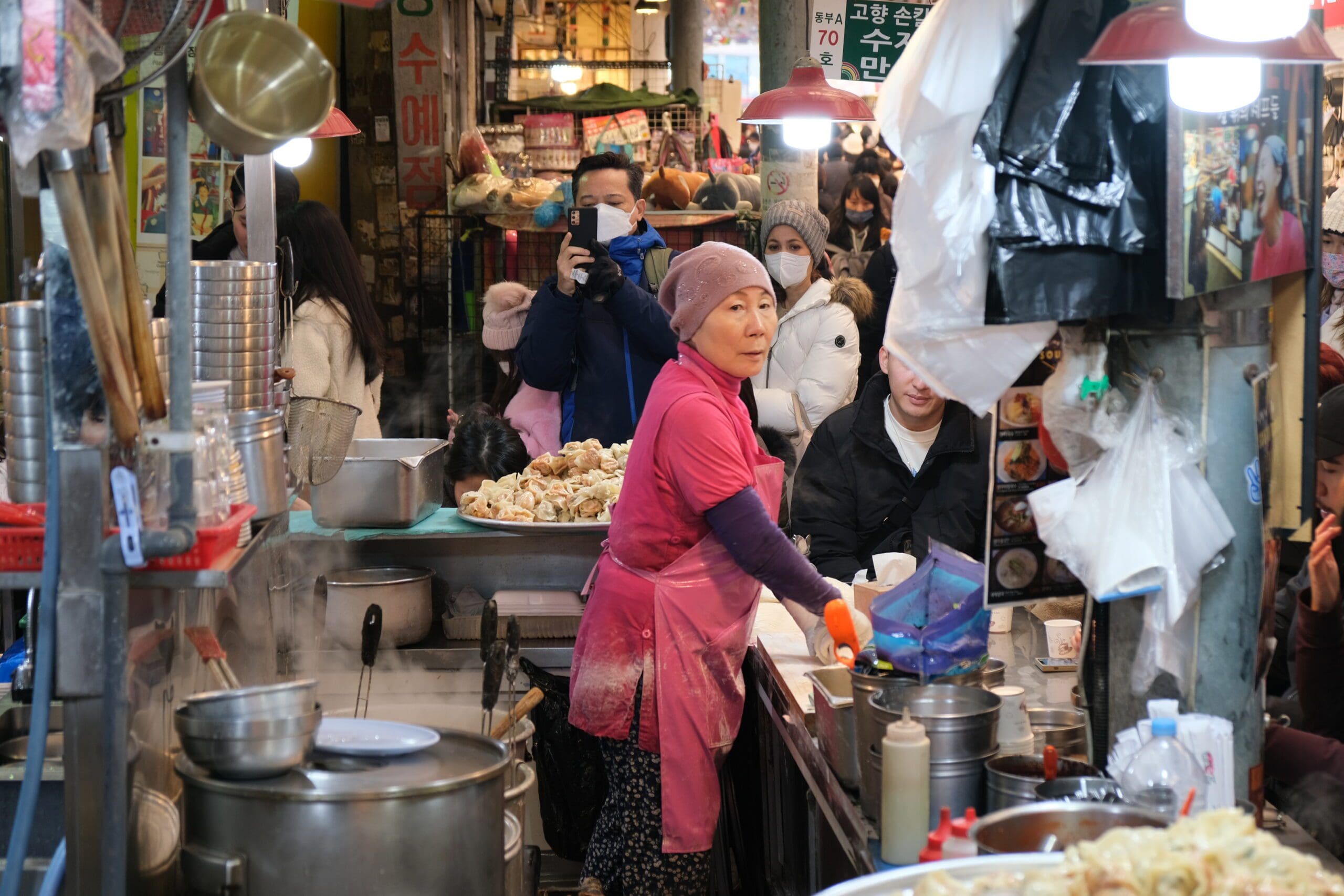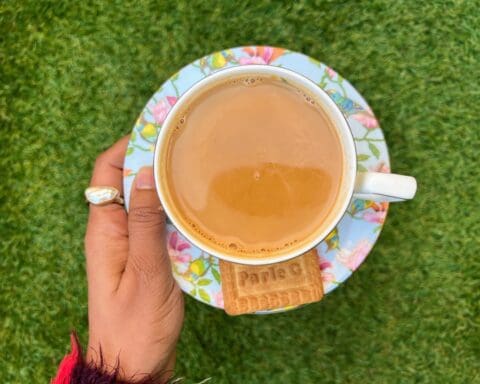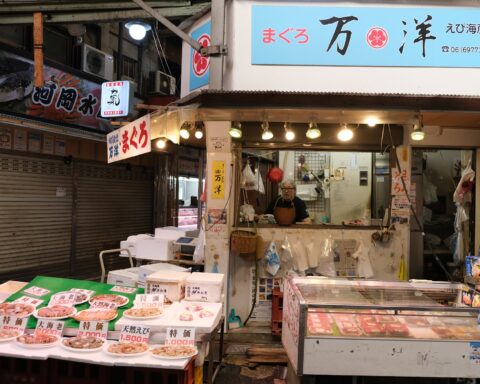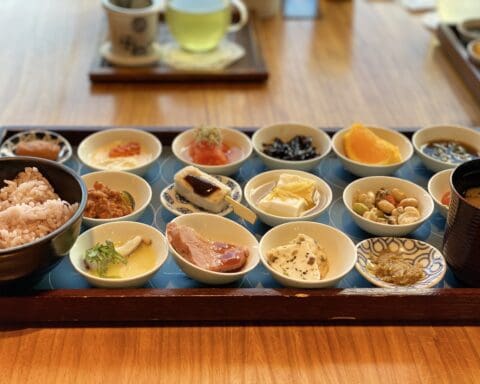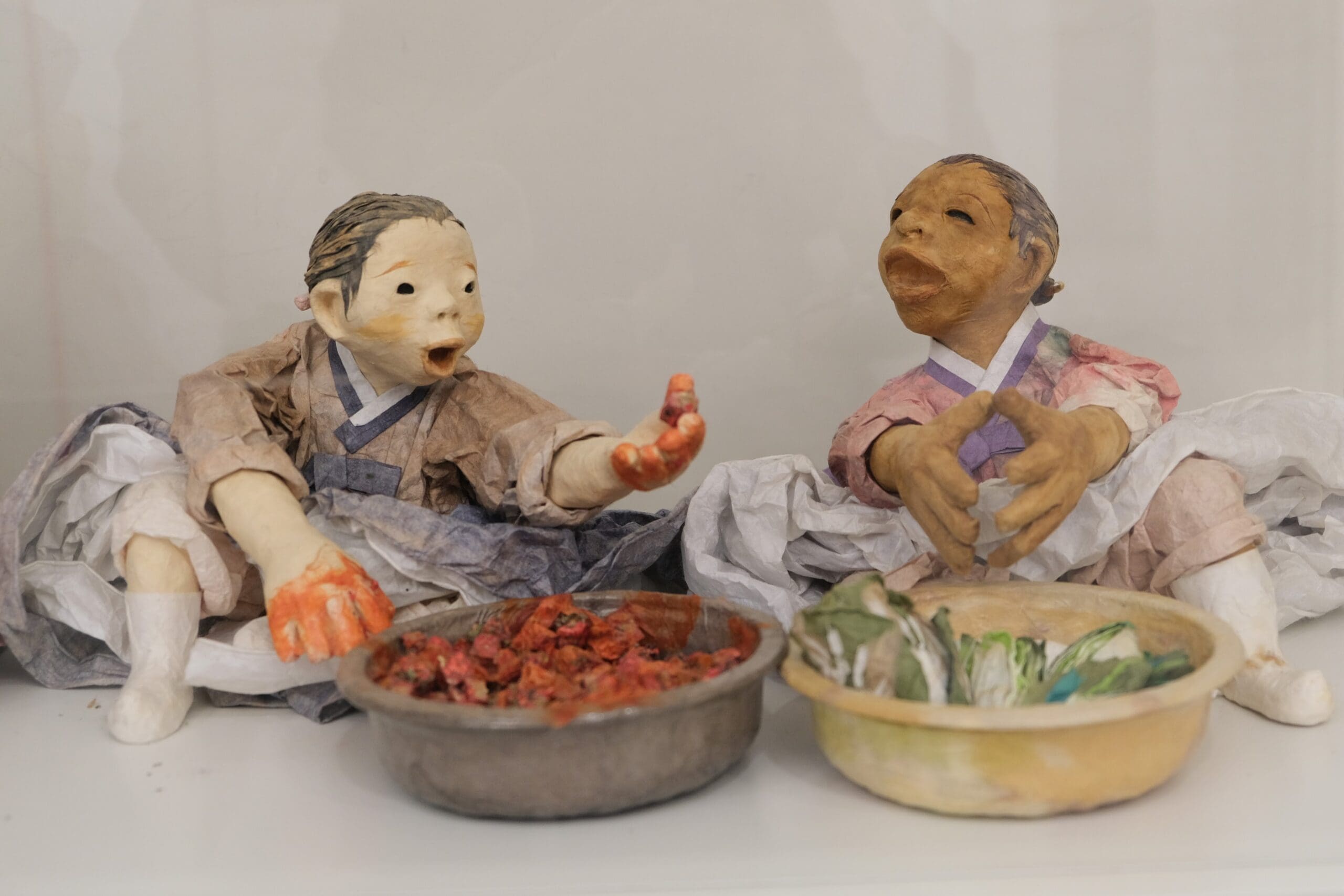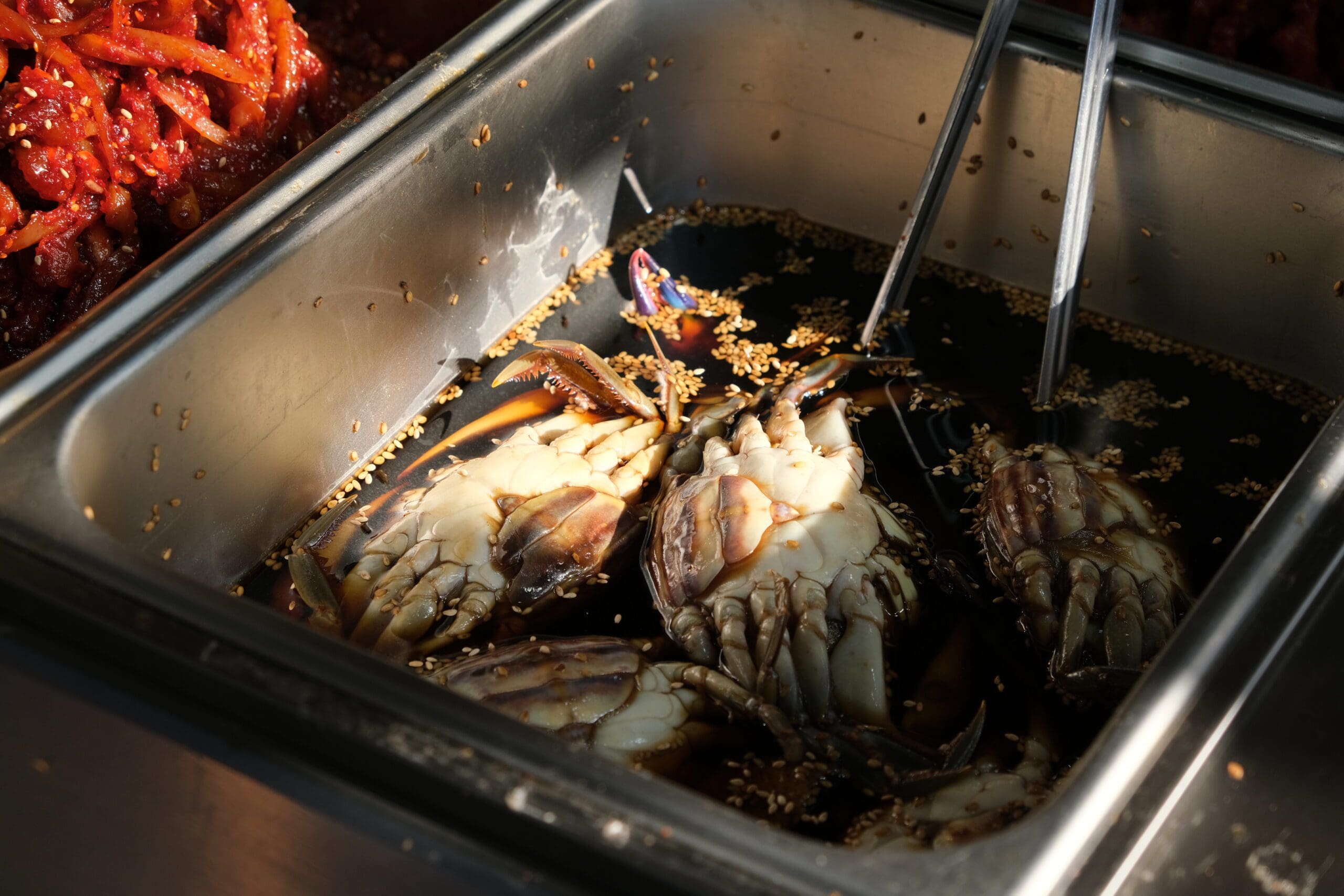We were walking around Gwanjang Market when I saw the longest line of people at a Kalguksu stall. A quick Google on the spot revealed that Gohyang Kalguksu stall is Netflix-famous. It was featured on the Netflix show Street Food Asia. I hadn’t watched the show, but the long queue convinced me to join the line and dragged Fafa with me. Eventually, after what felt like an eternity (imagine standing in line in winter, right beside people who were eating and surrounded by thousands of delicious Korean street food).
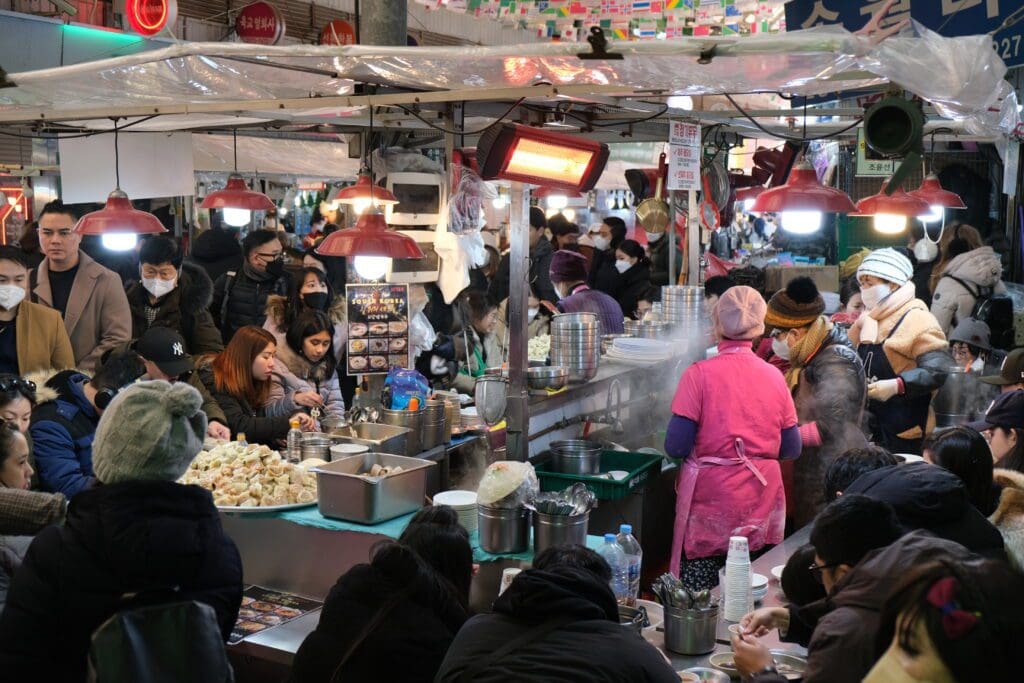
Kalguksu is a Korean soup dish made with knife-cut wheat flour noodles. It was on my to-eat list in Korea, but it wasn’t a priority, say, compared to Korean chicken dishes.
Gohyang Kalguksu food stall is located in the middle of the Gwanjang Market. You wouldn’t have any trouble finding it. Firstly, because of the queue and the posters of smiling Cho Yonsoon (the owner) with the word Netflix plastered on them. The food stall comprises four benches and four tables surrounding a makeshift kitchen in the middle where you can see Cho Yonsoon preparing the Kalguksu. As far as experiencing Korean food culture, it couldn’t come any closer than this.
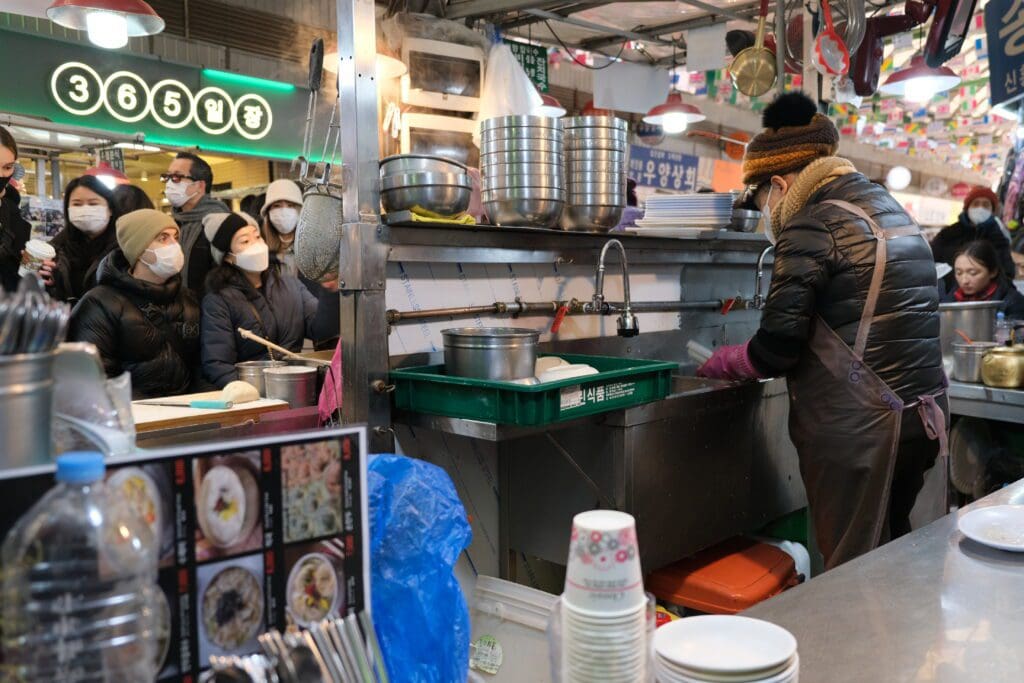
Eventually, we were seated, elbow-to-elbow, with strangers from all over the world. On my left is a Korean uncle halfway through his bowl of Kalguksu. He seemed to be a regular and tried to promote how good the Kalguksu was to me with a thumbs-up. On my right, Fafa, who appeared to be claustrophobic by the whole experience. But it didn’t matter; we were there to eat a Netflix-famous street food, something we had never done before. We ordered a bowl of Kalguksu (the portion seemed too big for a person) and dumplings when we heard the person beside Fafa asking for it.
While waiting, we realized something; the bench was heated. It was so good, especially after standing in the cold for some time.
Bright Pink Apron-Wearing Lady Behind Netflix Famous Kalguksu
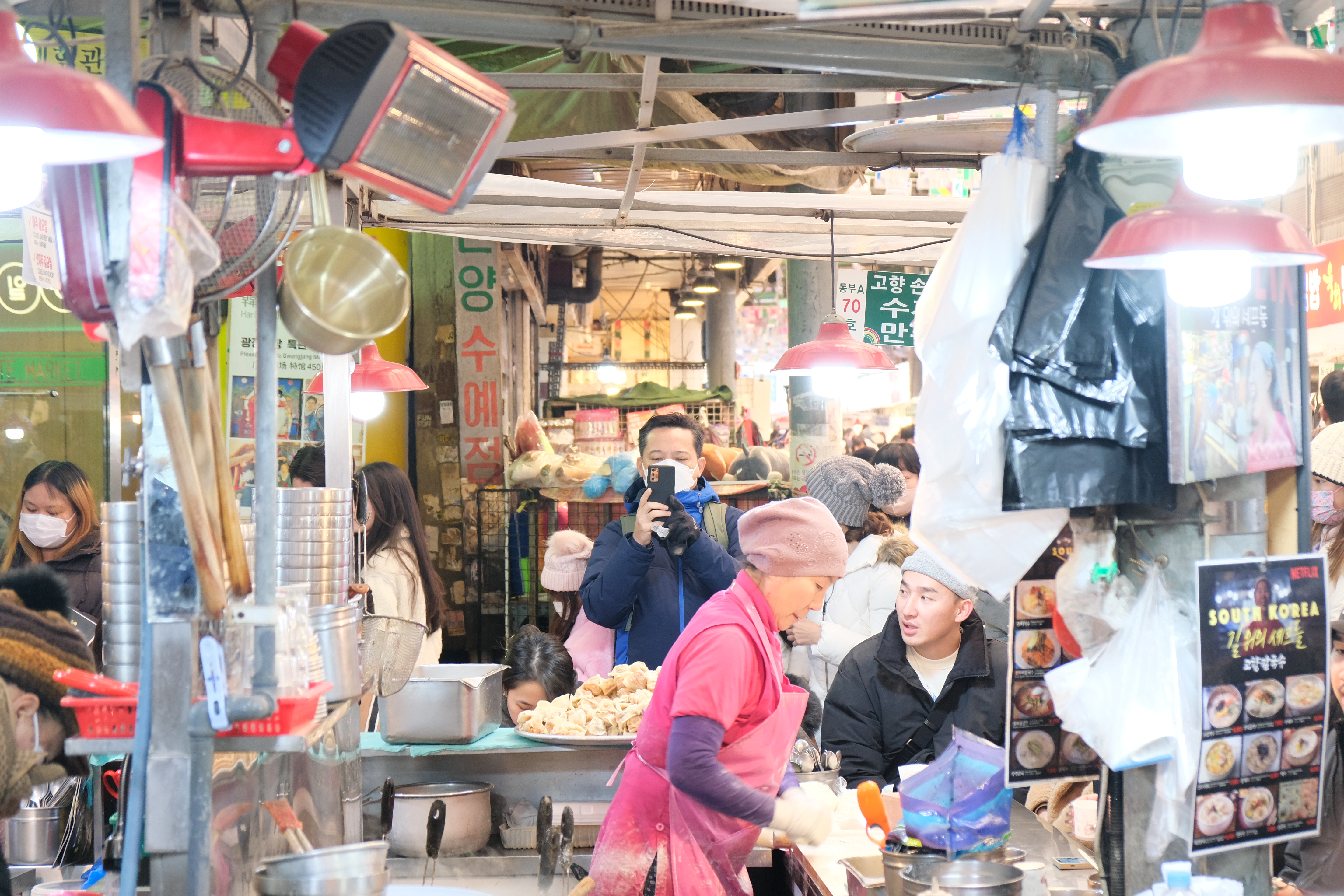
I also noticed how Cho Yonsoon kept engaging with the customers, greeting them and talking to them while still busy preparing the food. She was all smiles all the time, which is pretty unusual for a Netflix-famous person, I’d say, especially since she didn’t stop working for even a second.
A Bowl of Kalguksu
She even gave us a smile and a nod while placing the food on the table. I first tried Kalguksu, without the soup. It looked like a thicker and larger version of the flat rice noodles in Char Kway Teow.
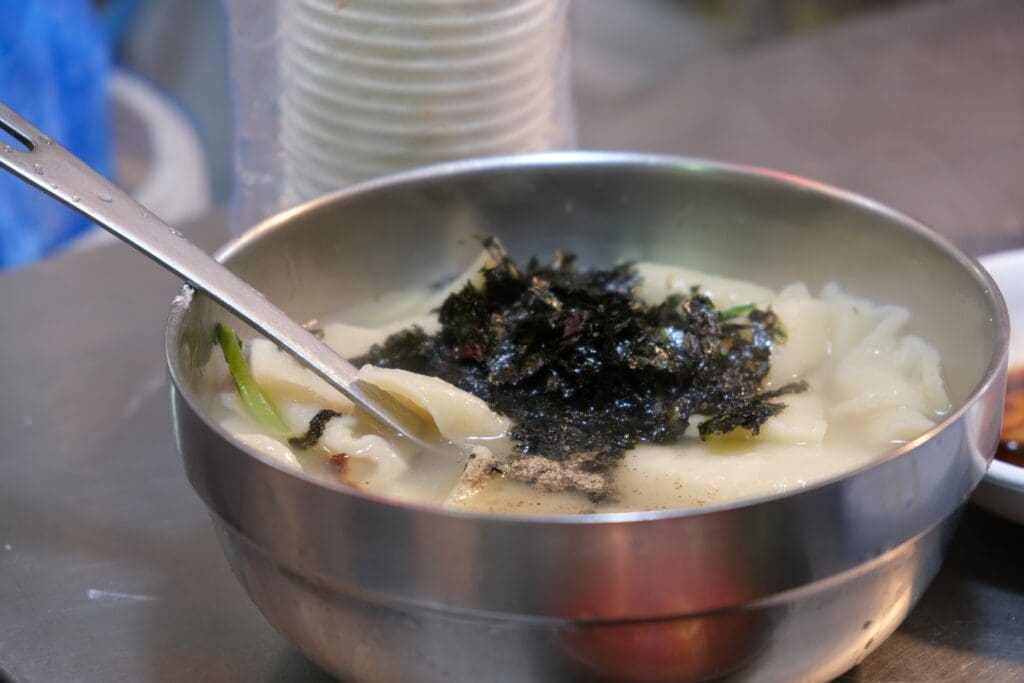
Just by itself, it tasted like a slippery dough with a hint of sweetness to it. I then ate it like how it was supposed to be eaten – in a smaller bowl with the soup and the garnish that came with it. A single soupy slurp convinced me why Gohyang Kalguksu was worth the Netflix fame. It was oh-so-flavourful, which was not something I expected by just looking at the slightly cloudy clear soup.
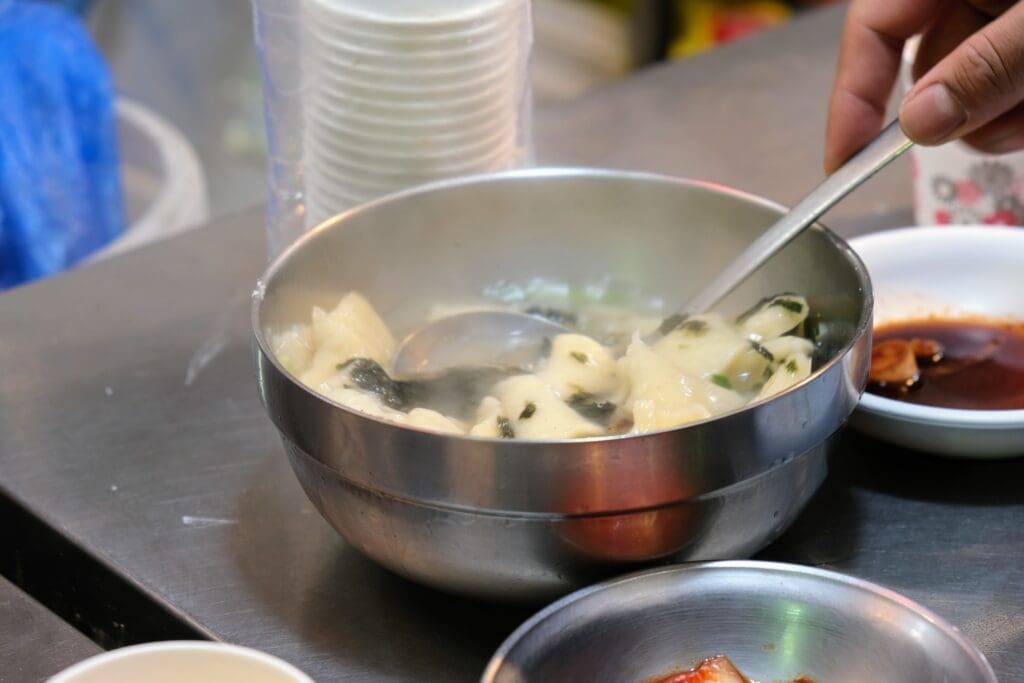
Kimchi Mandu
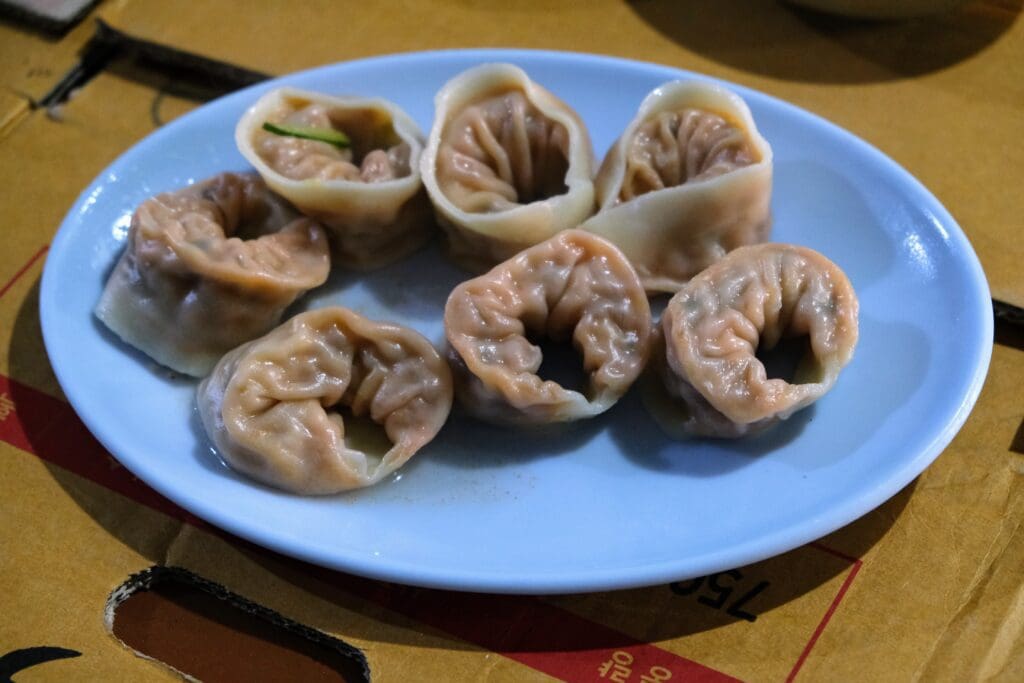
Next, I tried the dumplings or Mandu in Korean. I had never had Kimchi Mandu before and was excited to try it finally. I could taste a robust Kimchi flavour (obviously, as it was a Kimchi dumpling) from the first bite. The thing is, I don’t like traditional radish kimchi, so for me, it was a pass. Fafa loved it though, so he finished it while I finished the Meat Mandu.
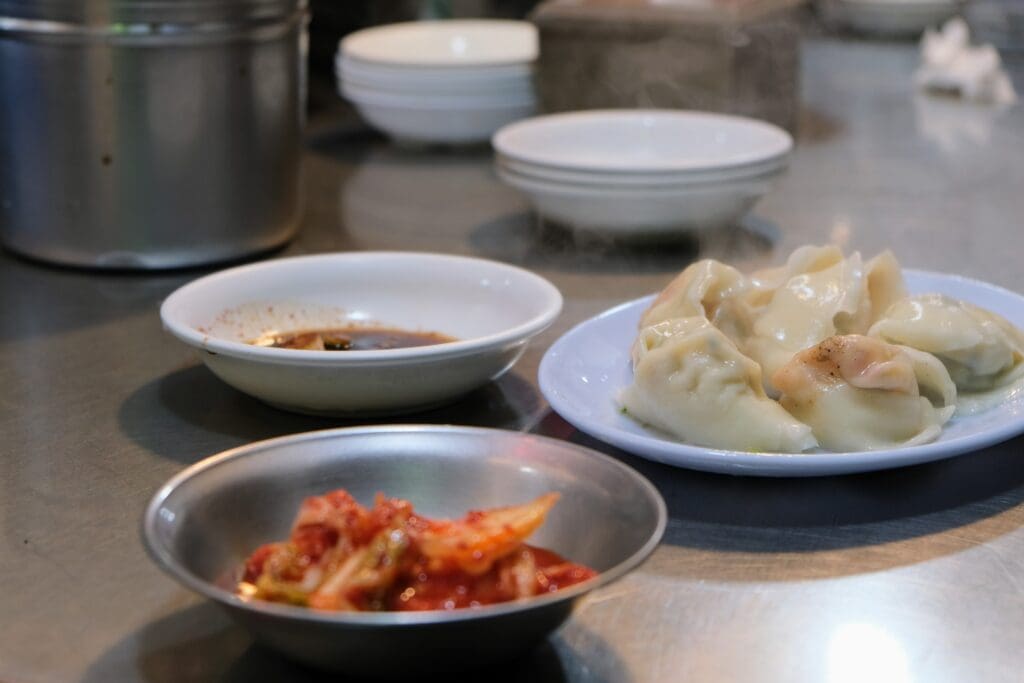
The Meat Mandu was good, especially when eaten drizzled with the homemade dip that came with the dumplings.
I left the stall with a warm heart, a warm tummy and an even warmer ass. I also told Fafa that we should check out other street food featured on the Netflix show because if it’s as good as Cho Yonsoon’s Kalguksu, then we definitely should eat it at least once.
Follow me on Instagram @KultureKween for more recent updates.
